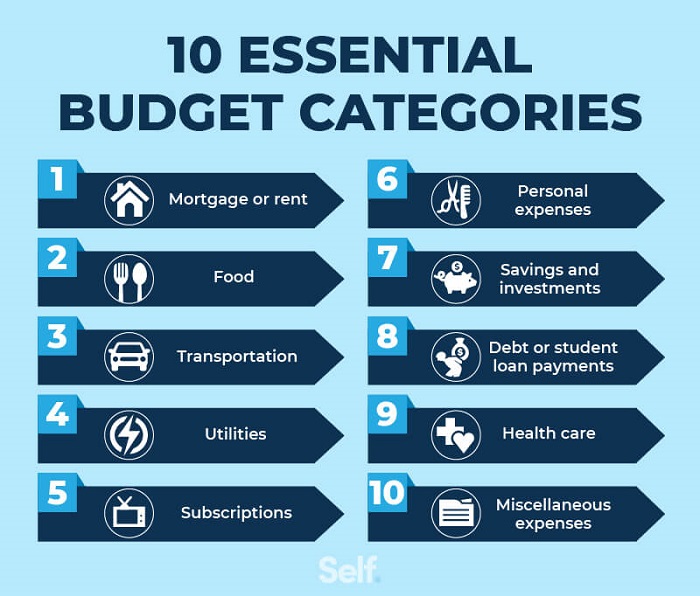
Futureproof Your Small Business: Essential Strategic Planning Tips for Uncertain Times
December 19, 2023From Stumble to Soar: How Consistent Tracking Turns Financial Plans into Profitable Realities
January 3, 2024Part 1: Conquering Cash Flow: A Guide to Small Business Budgeting
Navigating the financial waters of a small business can feel like riding a wild wave. One minute you’re cresting a surge of profit, the next you’re caught in the undertow of unexpected expenses. But fear not, intrepid entrepreneur! Small business budgeting is your life vest, keeping you afloat and steering you towards calmer financial seas.
Why Budget Like a Boss?
Let’s face it, numbers aren’t everyone’s cup of tea. But before you throw the budgeting manual overboard, consider this: a well-crafted budget is your financial roadmap. It illuminates your income streams, maps out your expenses, and guides you towards your business goals, whether it’s boosting profits, expanding operations, or simply staying in the black.
Imagine:
- Predicting cash flow with crystal clarity: No more white-knuckling it through bill payment deadlines. Budgeting lets you anticipate income and expenses, ensuring you have enough treasure in the chest to weather any financial storm.
- Making informed decisions with laser focus: Gone are the days of flying blind. Budgeting empowers you to prioritize spending, invest strategically, and say “no” to shiny bells and whistles that don’t align with your financial course.
- Celebrating milestones and slaying financial dragons: Tracking progress against your budget is like watching a treasure map come to life. Every goal achieved, every cost slashed, is a victory dance worth doing.
And let’s not forget the peace of mind that comes with knowing you’re in control. Budgeting isn’t about rigid constraints; it’s about flexibility and adaptability. It allows you to weather market fluctuations, embrace unexpected opportunities, and ride the waves of your business journey with confidence.
Understanding Your Financial Landscape
Before you grab your budgeting compass and start charting your course, it’s essential to get to know your financial terrain. Take a peek at your financial statements:
- Income Statement: This is your earnings report, detailing your sales, costs, and profit. It’s like a snapshot of your financial engine – how much fuel is going in, how much is burning, and how much is left in the tank.
- Balance Sheet: This is your assets and liabilities snapshot. It shows what you own (equipment, inventory, cash), what you owe (loans, bills), and your net worth – the true value of your business.
- Cash Flow Statement: This tracks the movement of money through your business – how it comes in (sales, investments), how it goes out (expenses, payments), and your working capital – the cash you have on hand to operate.
These statements are your financial GPS, helping you navigate your unique financial landscape.
Categorizing Your Expenses: Fixed vs. Variable vs. Discretionary
Think of your expenses as the currents guiding your business ship. They come in three main flavors:
- Fixed costs: These are like anchors, constant and predictable. Rent, utilities, salaries, loan payments – they’re the bills you pay every month, rain or shine.
- Variable costs: These are like sails, fluctuating with the winds of your business. Inventory, raw materials, shipping costs – they rise and fall with your sales volume.
- Discretionary expenses: These are like decorative flags, adding flair but not crucial for the journey. Office supplies, travel, subscriptions – they can be adjusted or eliminated depending on your financial priorities.
Understanding these categories is key to allocating your resources effectively. Prioritize covering your fixed anchors, then adjust your sails and flags according to your budgetary winds.
Choosing the Right Budgeting Method: Your Financial Compass
Just like different maps suit different journeys, there’s no one-size-fits-all budgeting method. Here are three popular options to consider:
- Zero-based budgeting: Every dollar has a job here. You assign every penny of your income to specific expenses, ensuring nothing gets lost at sea. It’s intense but offers maximum control.
- Percentage-of-sales budgeting: This is like autopilot for your sails. You base your expenses on a set percentage of your sales, making it flexible for fluctuating income.
- Envelope budgeting: This is like physical cash islands. You allocate cash to different spending categories in envelopes, promoting visual awareness and preventing overspending.
Choose the method that resonates with your business size, financial knowledge, and comfort level. It’s your compass, guiding you towards your budgetary destination.

Part 2: Charting Your Course: Implementing and Monitoring Your Small Business Budget
With your financial map unfurled and your budgeting compass in hand, it’s time to set sail on the high seas of implementing and monitoring your small business budget. Buckle up, entrepreneurs, because here’s where the rubber meets the financial road!
Putting Your Budget into Action: From Paper to Practice
Transforming your meticulously crafted budget from blueprint to reality takes consistent action and clear communication. Here’s how to make it happen:
- Communicate the Budget to Your Team: Ensure everyone on board understands the financial roadmap. Explain budget goals, expense categories, and individual responsibilities. Transparency fosters accountability and empowers your crew to navigate alongside you.
- Track Expenses and Income Like a Hawk: Whether you use software, spreadsheets, or trusty notebooks, diligently record every penny flowing in and out. Consistency is key to keeping your financial compass accurate.
- Embrace Flexibility and Adapt to Changing Tides: The business world is rarely smooth sailing. Be prepared to adjust your budget as circumstances change. Unexpected costs? Tighten your sails. New opportunity arises? Trim the fat and hoist the sails!
Remember, your budget is a living document, not a rigid decree. Embrace its adaptability and use it as a tool to navigate choppy waters and reach your financial destination.
Monitoring and Evaluating Your Budget Performance: Keeping Your Ship Ship-Shape
Just like a captain constantly checks the instruments, regular budget monitoring and evaluation is crucial for staying on course. Here’s how to assess your financial health:
- Regular Budget Reviews: Schedule monthly or quarterly check-ins to compare actual results with budgeted amounts. Identify areas of overspending or underperformance, and adjust your sails accordingly.
- Variance Analysis: Unmasking the Why Behind the Numbers: Deep dive into any budget deviations. Why are expenses higher than expected? Are certain income streams lagging? Uncover the root causes and implement corrective measures.
- Performance Dashboards: Making Data Dance: Visualize your budget data through charts and graphs. This makes it easy to track progress, identify trends, and celebrate milestones with your crew.
Monitoring isn’t about punishment; it’s about continuous improvement. Use these insights to refine your budget, optimize spending, and ensure your financial ship stays on track.
Advanced Budgeting Techniques for Growth: From Captain to Admiral
Once you’ve mastered the basics, it’s time to hoist the sails of advanced budgeting techniques and conquer even more challenging financial horizons:
- Scenario Planning and Sensitivity Analysis: Explore “what-if” scenarios. Model different economic climates and their impact on your budget. Be prepared for stormy weather and identify strategies to keep your business afloat.
- Rolling Forecasts and Budget Flexibility: Don’t let your financial map become outdated. Regularly update your forecasts based on new information and market trends. Embrace flexibility and adjust your budget as needed, ensuring you’re always sailing with the wind.
- Capital Budgeting and Investment Analysis: If you’re charting a course towards expansion, capital budgeting is your treasure map. Evaluate potential investments based on their return on investment (ROI). Weigh the risks and rewards before setting sail for new financial territories.
These advanced techniques equip you to navigate complex financial landscapes, make informed investment decisions, and propel your business towards ambitious growth goals.

Financial Discipline and Building a Sustainable Budget: Your Unbreakable Anchor
Maintaining a healthy budget requires financial discipline, the captain’s unwavering commitment to the journey. Here are some anchors to keep your ship on course:
- Controlling Costs and Eliminating Waste: Scrutinize every expense line item. Can you renegotiate vendor contracts? Reduce unnecessary office supplies? Every penny saved strengthens your financial keel.
- Building a Financial Reserve and Emergency Fund: Prepare for stormy seas. Allocate funds for unexpected expenses and market downturns. A sturdy financial reserve ensures you can weather any financial squall.
- Automate Financial Processes and Payments: Let technology be your first mate. Utilize software and online tools to automate expense tracking, bill payments, and payroll. This streamlines your processes and frees you to focus on steering the ship.
Financial discipline isn’t about deprivation; it’s about building a sustainable financial future. By controlling costs, planning for the unexpected, and leveraging technology, you ensure your business can navigate any economic weather and reach its full potential.
Conclusion:
Sailing the uncertain waters of small business can be both exhilarating and terrifying. But just like a skilled captain navigates by the stars, you can navigate your financial journey with the precision of a well-crafted budget.
This budget isn’t just a paperweight; it’s your financial compass, guiding you towards calmer financial seas. It whispers secrets of predictable cash flow, empowers you to make informed decisions, and celebrates every milestone along the way.
Remember, building a successful budget isn’t about rigid constraints; it’s about flexibility and adaptation. Embrace the changing tides of your business, adjust your sails as needed, and use your budget as a tool to conquer unexpected storms.
So, are you ready to chart your course towards financial freedom? Here’s your call to action:
- Unfurl your financial map: Gather your financial statements and understand your income and expense landscape.
- Choose your compass: Select the budgeting method that resonates with your business size and financial knowledge.
- Set sail with action: Put your budget into practice, track your progress, and be ready to adjust your course as needed.
- Embrace the winds of change: Use advanced budgeting techniques to prepare for unforeseen challenges and navigate towards ambitious growth.
- Anchor your success: Cultivate financial discipline, control costs, and build a secure financial reserve for calmer waters.
Remember, every voyage begins with a single step. Take that step today, craft your budget, and watch your small business blossom into a financial powerhouse. The open seas of success await!
FAQs about Small Business Budgeting
- Q: How often should I update my budget?
- A: Consider factors like business size, industry, and volatility.
- Q: What if I don’t have any financial data to start with?
- A: Make realistic estimates based on industry benchmarks and competitor analysis.
- Q: What should I do if I’m consistently overspending my budget?
- A: Identify the root causes of overspending and implement corrective measures.
- Q: How can I use my budget to motivate and engage my team? (50 words)
- A: Set individual or team-based budget goals with rewards for achievement.
Resources
Free Small-Business Budget Templates
- Your business budget template can act as a business health scorecard if you set it up properly.
How to Create a Financial Forecast
- Businesses create financial forecasts to play out a predicted future. Communicated through forward-looking financial statements, forecasts reflect how your business might look according to your estimates and assumptions about future revenue, expenses, and changes in your business.
7 Smart Business Budgeting Tips for Small Business Owners
- If you’re looking for information on business budgeting, you’ve come to the right place. Navigating it can be as challenging as Austin’s South by Southwest traffic. But fear not, it doesn’t have to be overwhelming. By using the right approach and following helpful tips, your business budget can guide your financial success.



